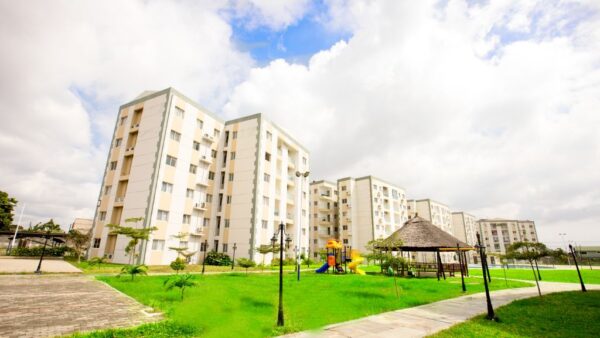Navigating Mortgage Financing in Ghana: A Guide for Executives, Investors, and Professionals
September 4, 2025
![]()
In real estate, access to money is pivotal in determining how much you can invest. As Ghana’s real estate market grows within and beyond Accra, buyers are increasingly warming up to the idea of purchasing their homes with a mortgage. Some have been able to use this financial modeling to their advantage, while others still lack understanding of how the process works.
Waylead provides an invaluable guide to help you navigate the process of mortgage financing in Ghana’s financial system.
Part One: The Process—An 8-Step Guide
Even though people frequently think that mortgage financing is a tedious affair, breaking it down into steps makes it easier to understand what to expect. The process usually takes 3 to 12 weeks, from the time you request the facility to the time you receive it.
Step 1: Prequalification and Initial Inquiry
At this stage, you talk to a mortgage officer about what you need. The officer gives you an idea of how much you can borrow based on your income and debt situation. This estimate isn’t binding, but it can help you plan your budget.
Step 2: Formal Application and Submission of Document
After you find a property or get an offer letter from a developer, you fill out the bank’s application form and send in the necessary paperwork.
You need to bring the following documents:
- A national ID card, a passport, or a SSNIT card (if applicable)
- Proof of income: bank statements from the last 6 to 12 months, recent pay slips (for salaried applicants), audited business accounts, tax returns, or business bank statements
- Proof of Employment: A letter from your employer verifying your employment
- Property Documents: A sale agreement, title deed, site plan, and building plans (if they apply)
The title to the property must be clear and marketable, and it must show its fair market value.
Step 3: Determine the Value of the Property

The bank hires an independent appraiser from its list of qualified appraisers to determine if the property’s valuation is equal to the purchase price and is enough to serve as collateral. The applicant has to pay for the appraisal.
Step 4: Credit Assessment and Committee Approval
The bank’s credit staff looks through the application, the accompanying paperwork, and the report on the property’s value. They also assess the debt-to-income ratio, the credit history (via the Credit Reference Bureau), and the general risk profile. After that, the credit committee scrutinizes the application for final approval.
Step 5: Offer and Acceptance

If the application is approved by the bank, it sends a formal mortgage offer letter that lists the loan amount, interest rate, tenure, repayment plan, and any costs that come with it. Before you sign, you need to read this document carefully, ask questions, and make sure you understand all the terms.
Step 6: Legal Conveyancing and Making Security Better
This step usually takes the most time. The bank’s lawyers do their due diligence at the Lands Commission and prepare legal documents that include the mortgage deed and assignment. It is a good idea to hire your own lawyer to review the documents to ensure your interests are protected.
Step 7: Signing the Mortgage Documents
The borrower, the developer, and witnesses all sign the necessary documents at this point.
Step 8: Registration and Disbursement
The bank’s lawyers register the signed documents with the Lands Commission, which officially demonstrates the bank’s interest in the land. The bank will disburse the funds directly to the developer or as agreed once the registration process is completed.
Final Thoughts
A mortgage is a long-term financial commitment. Depending on how well you prepare, check your finances, and negotiate terms, it can either put a strain on your resources or be a useful instrument for wealth development.